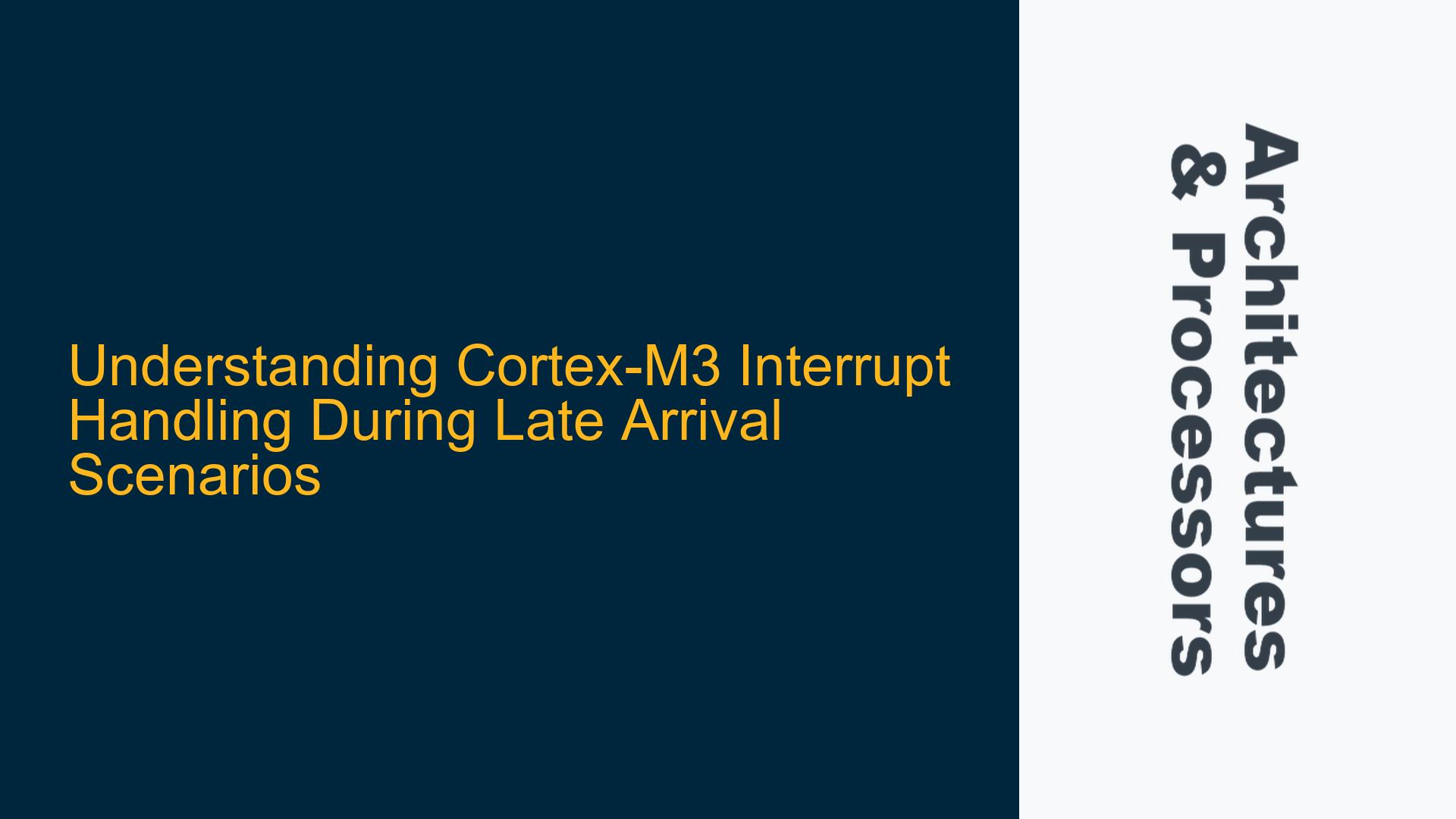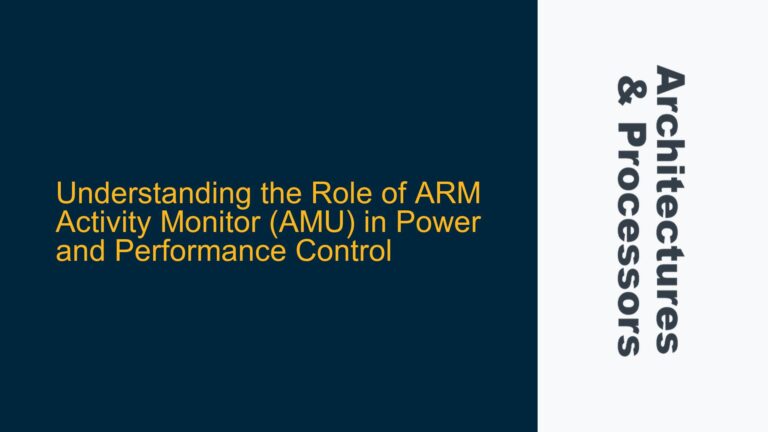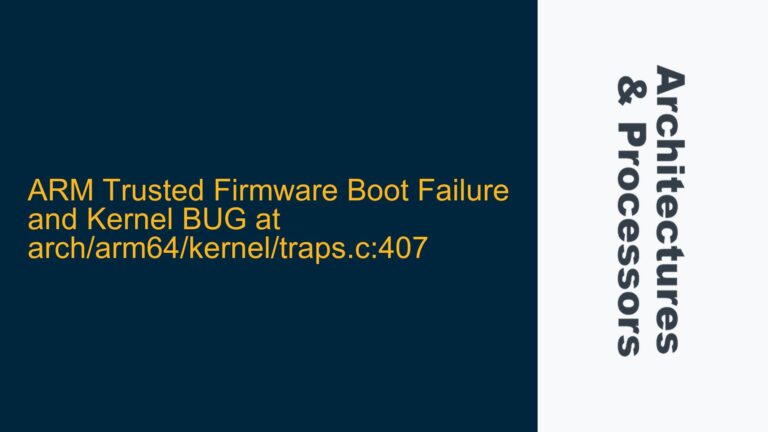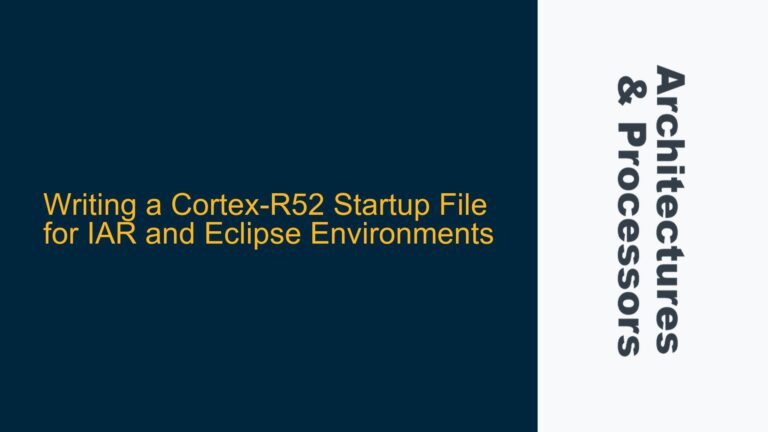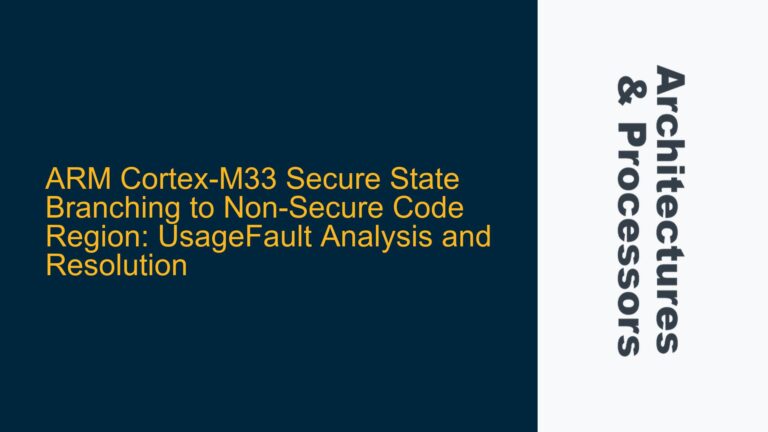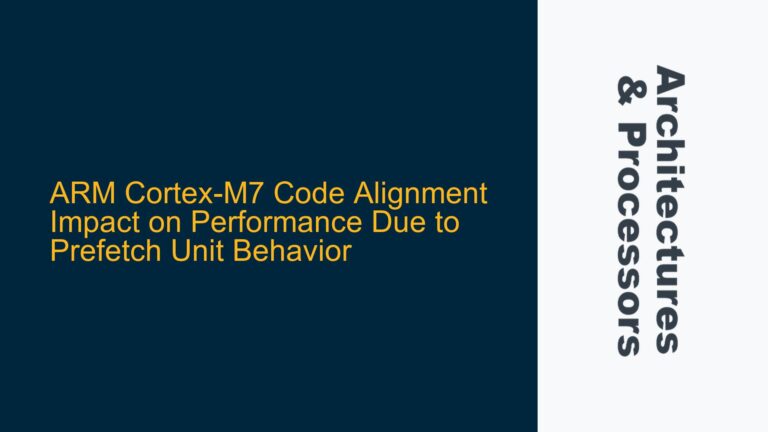Cortex-M3 Late Arrival Interrupt Behavior and State Saving
The Cortex-M3 processor, like many ARM cores, employs a sophisticated interrupt handling mechanism designed to ensure efficient and deterministic response to external events. One of the nuanced scenarios in this architecture is the "Late Arrival" interrupt case, where a high-priority interrupt (HP) occurs while a low-priority interrupt (LP) is in the process of being serviced. Specifically, the Cortex-M3 documentation mentions that during Late Arrival, no additional state saving is required for the high-priority interrupt. This statement can be confusing, especially when considering the implications for the Link Register (LR) and the stack.
When a low-priority interrupt is triggered, the Cortex-M3 begins by saving the state of the interrupted thread. This state saving involves pushing eight registers (R0-R3, R12, LR, PC, and xPSR) onto the stack. If a high-priority interrupt arrives during this state-saving process, the Cortex-M3 does not need to perform additional state saving for the high-priority interrupt. This is because the state of the interrupted thread, which is being saved by the low-priority interrupt, is identical to what would be required for the high-priority interrupt. The stack frame created by the low-priority interrupt is sufficient for both interrupts.
The key point of confusion arises when considering the role of the Link Register (LR). During normal interrupt handling, the LR is loaded with an EXC_RETURN value, which dictates the return behavior after the interrupt handler completes. In the case of Late Arrival, the LR saved by the low-priority interrupt contains the return address for the interrupted thread, not an EXC_RETURN value. This is because the state saving is focused on preserving the context of the interrupted thread, not the interrupt handler itself.
The high-priority interrupt handler will use the same stack frame created by the low-priority interrupt. When the high-priority handler completes, it will load the LR value into the Program Counter (PC), triggering the return sequence. However, instead of returning directly to the interrupted thread, the Cortex-M3 will recognize that there is still a pending low-priority interrupt. This recognition is facilitated by the Nested Vectored Interrupt Controller (NVIC), which is tightly integrated with the processor. The processor will then tail-chain into the low-priority interrupt handler, using the same stack frame.
EXC_RETURN and Tail-Chaining in Nested Interrupts
The EXC_RETURN value plays a critical role in the Cortex-M3’s interrupt handling mechanism. This value is loaded into the LR when an interrupt is entered and determines the return behavior when the interrupt handler completes. In the context of Late Arrival interrupts, understanding the EXC_RETURN value is essential for comprehending how the processor transitions between interrupt handlers and the interrupted thread.
When a high-priority interrupt occurs during the state-saving phase of a low-priority interrupt, the LR in the high-priority handler will contain an EXC_RETURN value indicating a return to thread mode (0xFFFFFFF9). This is because only one level of stacking has been performed—the state of the interrupted thread. The high-priority handler does not initiate a new level of stacking, as the stack frame created by the low-priority interrupt is sufficient.
After the high-priority handler completes, the processor will load the EXC_RETURN value from the LR into the PC. This action triggers the return sequence, but instead of unstacking and returning to the interrupted thread, the processor will tail-chain into the low-priority interrupt handler. This tail-chaining behavior is a key optimization in the Cortex-M3 architecture, allowing for efficient handling of nested interrupts without unnecessary stacking and unstacking operations.
It is important to note that if the high-priority handler modifies the EXC_RETURN value (e.g., by changing the SPSEL bit), this modified value will be used when entering the low-priority handler. This behavior underscores the importance of understanding the EXC_RETURN mechanism and its impact on interrupt handling.
Debugging and Optimizing Late Arrival Interrupt Handling
When working with Cortex-M3 processors, particularly in systems with complex interrupt hierarchies, it is crucial to ensure that the interrupt handling logic is correctly implemented and optimized. Misunderstandings of the Late Arrival behavior can lead to subtle bugs, such as incorrect stack management or improper interrupt prioritization. Below are some key considerations and steps for debugging and optimizing Late Arrival interrupt handling.
First, verify that the stack frame created by the low-priority interrupt is correctly utilized by the high-priority interrupt. This involves ensuring that the state-saving process is not interrupted or corrupted by the high-priority interrupt. Use debugging tools to inspect the stack contents and confirm that the saved registers are consistent with the expected state of the interrupted thread.
Second, carefully examine the EXC_RETURN values used by the interrupt handlers. Ensure that the high-priority handler does not inadvertently modify the EXC_RETURN value in a way that could affect the behavior of the low-priority handler. This is particularly important if the high-priority handler performs any operations that could alter the LR, such as function calls or context switches.
Third, analyze the tail-chaining behavior to confirm that the processor correctly transitions from the high-priority handler to the low-priority handler. Use breakpoints and watchpoints to observe the sequence of operations and verify that the NVIC correctly identifies the pending low-priority interrupt.
Finally, consider the impact of interrupt prioritization on system performance. In systems with frequent Late Arrival scenarios, the tail-chaining optimization can significantly reduce interrupt latency and improve overall responsiveness. However, it is essential to ensure that the interrupt priorities are correctly configured to prevent priority inversion or other undesirable behaviors.
By following these steps and maintaining a thorough understanding of the Cortex-M3’s interrupt handling mechanisms, developers can effectively debug and optimize their systems to handle Late Arrival interrupts reliably and efficiently.
